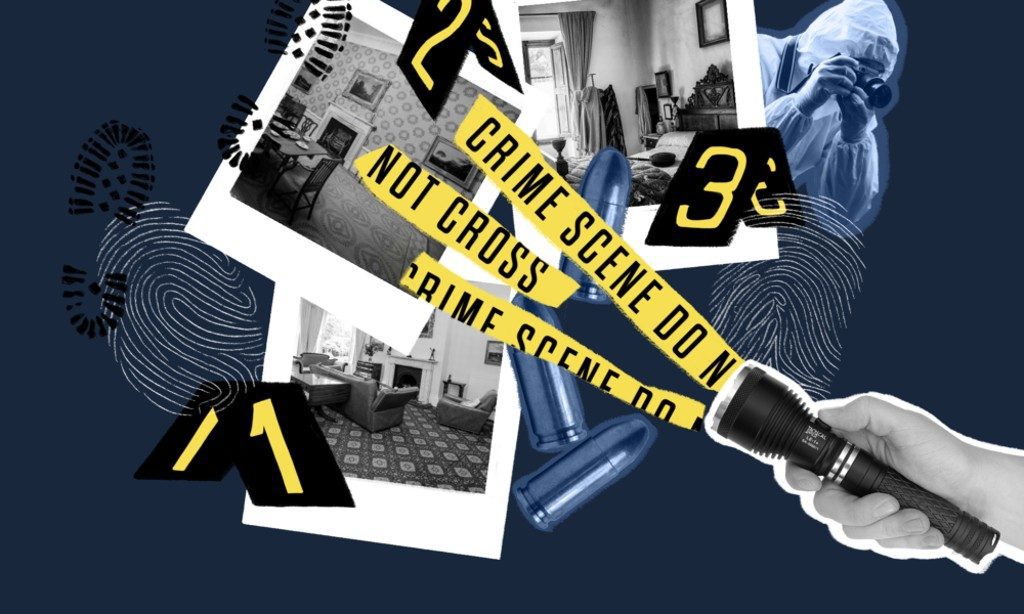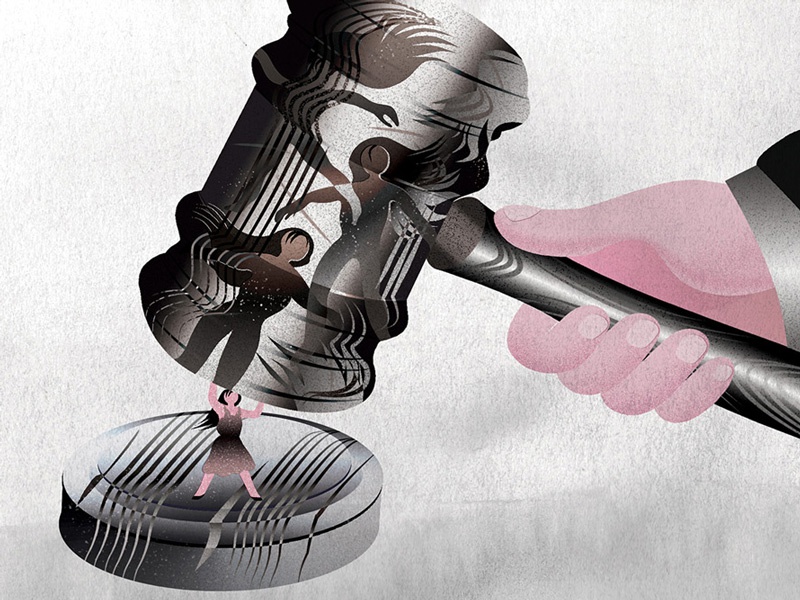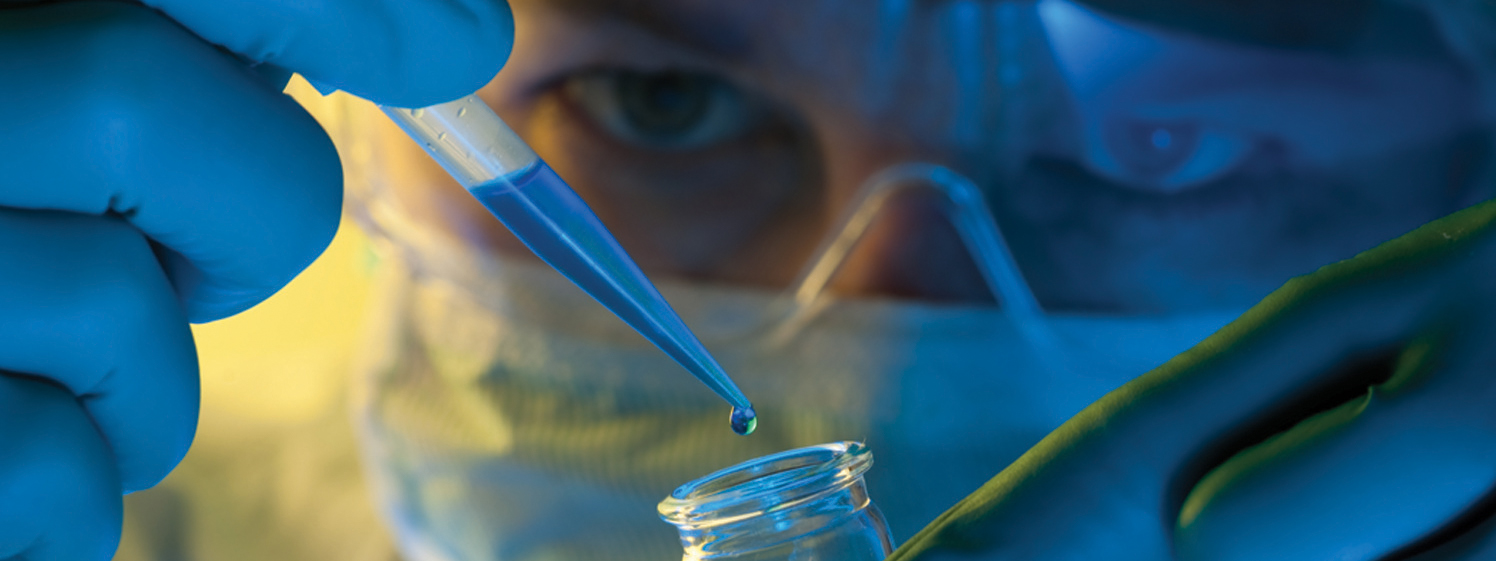
Surgically gloved hands picking at the scenes of any crime are a recognizable first sign of the forensic science being applied to assist the criminal investigation even for the common eye. It can be seen as a waste of time and effort but the results shine through in the form of confirmable evidence that can support the structure or reveal flaws in the arguments & testimonials, describe the distinctive natures of the suspects, and can prove the conviction of the guilty or the acquittal of the innocent.
The Bane of Sexual Offences

As of now, the category of crimes that have the highest occurrences in India is sexual offences. To put it briefly sexual offences are criminal actions which violate the humanitarian rights of the victims in a carnal manner and through carnal means. Such offences include exhibitionism, rape, molestation, necrophilia, bestiality etc. Not all malicious offences are sexual offences but all sexual offences are malicious offences. The unfortunate victims of these offences may usually be children or women but the judicial system recorded the victims extending to men, elderly people, the mentally ill & disabled to even animals and corpses of the dead who are not spared from the horror of the sex offenders which affirms the fact that sexual offences don’t recognise the boundaries of health, species & sacrament let alone morality.
The sex offenders in question were usually men but the latest studies and police reports have shown that the perpetration of sexual offences goes beyond one’s gender, age, social status, etc. i.e the 6th rapist of the 2012 Nirbhaya rape case who was a juvenile of 17 years, the 2018 Haryana Animal Sexual Abuse case which involved gang rape and brutal assault of a female goat by 8 men, the Nithari case (2008) where the perpetrators had murdered around 16 teen girls & women and sexually abused their dead bodies among other offences.
While this shows how immoral and dangerous these offences are, the legal action towards these cases often faced regular impasses in the form of a lack of definitive provisions that are required to specifically punish the perpetrators of specific offences namely those of animal sexual abuse & necrophilia, the stagnancy in the police force due to a lack of dedication towards solving these cases, instances of nepotism, prevailing aspects of rape culture in both politics and social norms which normalised the crime etc. Worst of all, the number of perpetrators responsible was poorly punished in comparison to the severity of their actions, let alone being arrested and convicted by the court.
A lot of the sexual offences are often accompanied by situations where without the presence of sustainable circumstantial evidence, the victims face difficulty in proving the atrocities they went through, undergo the pain of being denied justice for the violation of their bodily rights & dignity as a person and even face the undeserving stigma and shaming by the others for simply being a sexual assault survivor. It is also a critically important fact to remember that there are cases where malicious wrongdoers have falsely accused innocent persons of having committed sexual offences with the intention of humiliation, threats, extortion & defamation.
Even if these accusations are false, the victims of false accusations face unwanted and unjust stigma for these offences going beyond emotional harm, and social ostracism i.e the case of Arvind Kumar and Another vs State Of U.P. and Another (2020) in which the applicant had been threatened to give money to the respondent, a con woman who would file a false complaint of rape to the authorities if he had refused to submit to her demands & ill-treatment and not limiting to physical bodily harm such as mob lynching & attempted murder. Sexual offences will factually be the kind of offences that harms anyone of either gender both physically and or mentally.
What is Forensic Science and what is the relevance of Forensic Evidence in Sexual Offences?

Forensic science is the application and expertise of a variety of scientific branches in gathering evidence with regard to the occurrence of a crime. The evidence gathered, preserved and used during the court trials is known as forensic evidence or medical evidence. Samples from the crime scene such as footprints, fingerprints, liquids, traces etc are gathered and analysed. Then these samples are sent to the investigators where they can become genuine evidence after the investigators find their relevancy as clues upon determining the nature of the crime and the status of the accused on the trial.
In the past before the establishment of the first forensic science department in 1878, Courts depended upon eyewitness accounts and roughly physical evidence which were not thoroughly effective in convicting the offender or proving an innocent of an accusation. Evidence gathered was prone to sabotage or replacement with falsified evidence. Even the extreme nature of the crime committed wasn’t determined either leading to the courts having to deliver verdicts that minimally punish the perpetrators and basically leave no scope of compensation for the victim’s families, let alone failure of delivering satisfactory justice.
In the matter of sexual offences appear a number of critical questions such as:
- The date and timing of the occurrence of the crime and/or the exact timing of the death of the victims.
- Whether there is more than one perpetrator to the crime.
- The kinds of accessories used as part of committing offence upon the victims such as whether the victim was raped by the perpetrators through forced sexual intercourse or forced insertion of a foreign object.
- Finding a connection between the physical injuries on the person of the victim to the accused.
- Identifying the perpetrators and/or victims through organic matter such as blood, saliva, semen, discharge etc.
- Whether the physical details mentioned in the testimonies of witnesses can be verified or not.
The values held towards Forensic Science in criminal investigations of Sexual Offences

- It provides evidence that is on the genetic or chemical level which is far stronger but just as necessary as the other kinds of evidence which can connect the person’s involvement in the crime. Evidence of that nature is difficult to preserve but irrefutable to solving the case.
- The medical practitioner in charge of gathering organic evidence via medical examinations of the survivors of the sexual offences (if they have fortunately survived the crime) becomes very crucial as they play a vast responsibility between gathering samples to be tested as evidence, treatment of the survivors, providing of psychological counselling to the patients, documentation of evidence, provision of information on where and when the Incident had taken place etc. Section 357C of the Code of Criminal Procedure, 1973 directs any and every hospital, public or private obligation to inform the police about any occurrences of sexual offences and to provide medical attention to the victims and treat them without any expenses, regardless of whether they are in a financial situation to afford them or not for saving their lives are a priority.
- Early medical tests often involved issues of respecting the patient’s consent against the need to extract the evidence as soon as possible, medical tests that cause trauma such as the 2-finger test, prejudiced behaviour towards the victims, omission of information or improper explanation of the information to the victim and their family etc. Central Forensic Science Laboratory Directorate of Forensic Science Services under the Ministry of Home Affairs provided a set of guidelines to ensure that in the situation where a medical examination has to be conducted on a survivor of a sexual offence, the examination must be conducted without prejudice, neglect, omission nor violation of the patient’s rights on part of the medical practitioner and/or their subordinates.
Conclusion
While we have investigators, medical practitioners and forensic analysts to conduct the investigation essential in providing evidence to Court, the gathering of evidence can be reinforced further with public involvement behind legal limits. Due to the continuous occurrences of these crimes, an individual has either witnessed the offence in a way or has had someone familiar to them become a victim. When that happens, one must act immediately to obtain proof of the occurrence of the sexual offences. Even if the victim is a stranger, it is crucial for the individual, who is aware of the nature of these crimes, to do the needful as a human being. Here are the following ways that one can gather evidence in such situations without breaking the legal rules or endangering one’s safety:
- Immediately alerting the authorities and the hospital.
- Driving the victims to the nearest hospital or health centre without delay.
- Victims of rape and other forms of sexual molestation would have traces of the perpetrator on their garments such as blood, saliva, semen, fingerprints etc. Place the garments in an airtight plastic bag, tag them under the date and timings, photograph them and deliver both the items and their photos as evidence to the investigators. This acts as an effective way to further assist forensic analysts in confirmation of the timing and recreation of the crime and prevents any unwanted delays in the investigation.